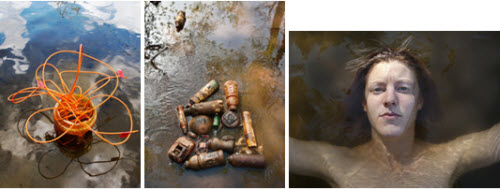January 13, 2011, Thursday - New Exhibit Opening at Mill City Museum
Location: Mill City Museum, 704 South Second Street.
The Mill City Museum will hold a public reception to open the exhibit for "Seeing the Big River: The Eco-Art of Peter L. Johnson" on January 13 from 6:00pm-8:00pm.
This new exhibit challenges viewers to 'See Beauty in Damaged Places'. Peter L. Johnson says of his work that it "seeks and sees beauty in damaged places." By creating what he calls "lyric" photographs, Johnson chooses subjects that present an unsettling truth about the devastating relationship between humans and the Mississippi River.

Johnson will give remarks at 7:00pm and refreshments will be available. The exhibit is located in the museum’s central Mill Commons, and is free and open to the public during regular museum hours.
Photographs accompanied by found "specimens" and videos will be on display at Mill City Museum from January 13 - May 16, 2011.
Johnson draws on his varied background as a documentary photographer, solo street performance artist and social activist to create his body of work entitled "Devastating Beauty." In his recent series called "Specimens" he expands on the bumper sticker slogan, "Take only photographs and leave only footprints." Johnson photographs then removes the "specimen" from the ecosystem finally presenting the item next to the photograph in a gallery setting. Johnson says "this adds another layer of connection between humans and their effect on the environment."
In the "Immersion" series, Johnson sparks a discussion about the dangers of just being in the Mississippi River. In order to enter the waters he had to sign a waiver which he displays alongside the life-size prints and a corresponding video.
This exhibit is part of "Greening the Riverfront," a series of programs that explore how humans interact with nature, in the past, present and future.
Built within the ruins of the Washburn A Mill, a National Historic Landmark, the award-winning Mill City Museum chronicles the flour milling industry that fueled the growth of Minneapolis. The story comes to life through the eight-story Flour Tower, Water Lab, Baking Lab and other hands-on exhibits.
 Share Article
Share Article 